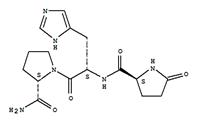Yet another paper questioning what actually happens to TSH - and then T4 and T3 - in people treated with levothyroxine. And says that T4-only does not do quite what our own bodies would if they could.
(Pituitary thyrotropin is another way of saying TSH.)
Eur J Endocrinol. 2012 Nov 26. [Epub ahead of print]
Is Pituitary Thyrotropin an Adequate Measure Of Thyroid Hormone-Controlled Homeostasis During Thyroxine Treatment?
Hoermann R, Midgley JE, Larisch R, Dietrich JW.
Source
R Hoermann, Department of Nuclear Medicine, Klinikum Luedenscheid, Lüdenscheid, Germany.
Abstract
Objective.
In recognition of its primary role in pituitary-thyroid feedback, thyrotropin (TSH) determination has become a key parameter for clinical decision-making. The present study evaluates the value of TSH as a measure of thyroid hormone homeostasis under T4 therapy.
Design, Methods.
We have examined the interrelationships between free triiodothyronine (FT3), free thyroxine (FT4) and pituitary TSH by means of 1) a retrospective analysis of a large clinical sample comprising 1994 patients either untreated or on varying doses of L-T4 and 2) independent mathematical simulation applying a model of thyroid homeostasis, together with a sensitivity analysis.
Results.
Over a euthyroid to mildly hyperthyroid functional range, we found markedly different correlation slopes of log TSH versus FT3 and FT4 between untreated patients and L-T4 groups. Total deiodinase activity (GD) was positively correlated with TSH in untreated subjects. However, GD was significantly altered and the correlation lost under increasing L-T4 doses. 95% confidence intervals for FT3 and FT4, when assessed in defined TSH concentration bands, differed significantly for L-T4-treated, compared to untreated patients. Higher doses were often needed to restore FT3 levels within its reference range. Sensitivity analysis revealed the influence of various structural parameters on pituitary TSH secretion including a preeminent role of pituitary deiodinase type 2.
Conclusion.
The data reveal disjoints between FT4-TSH feedback and T3 production that persist even when sufficient T4 apparently restores euthyroidism. T4 treatment displays a compensatory adaptation, but does not completely re-enact normal euthyroid physiology. This invites a study of the clinical consequences of this disparity.
PMID:
23184912
ncbi.nlm.nih.gov/pubmed/231...
Rod
